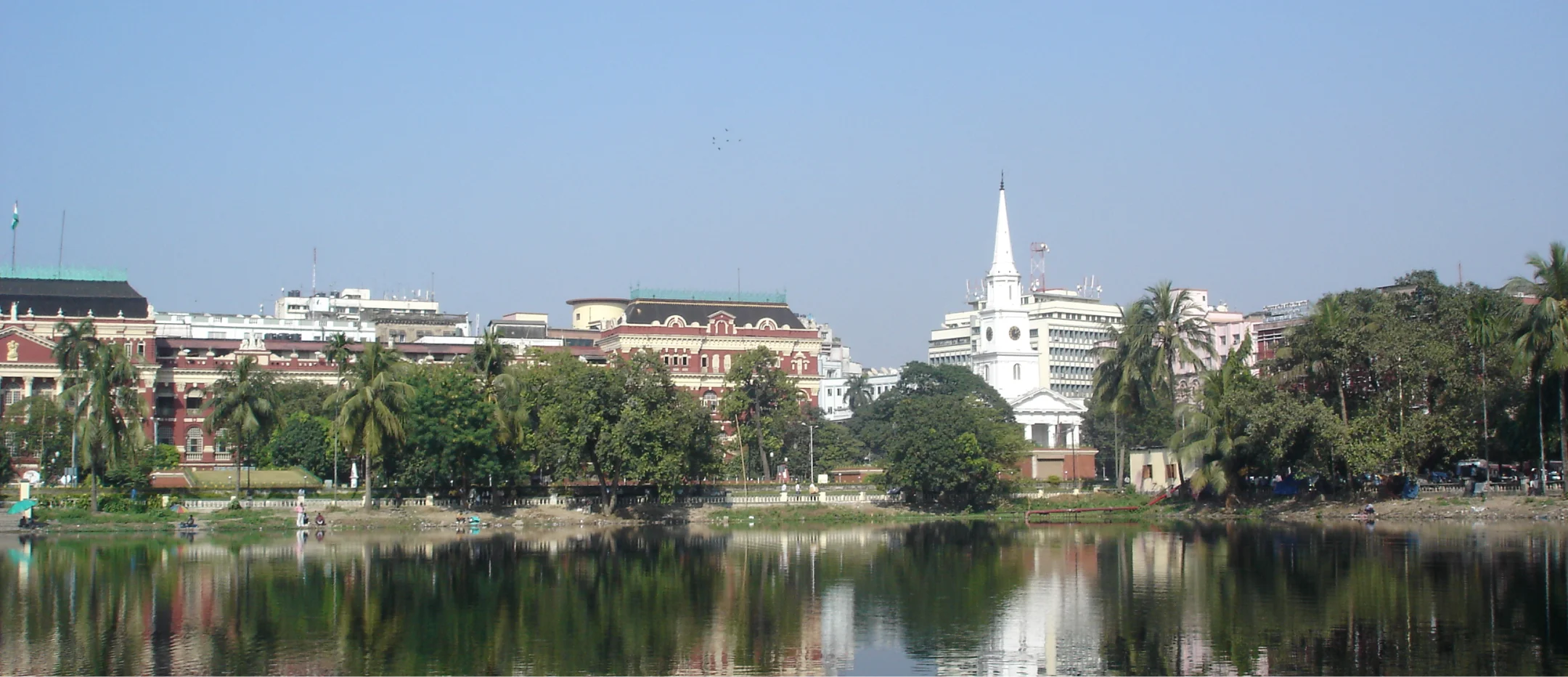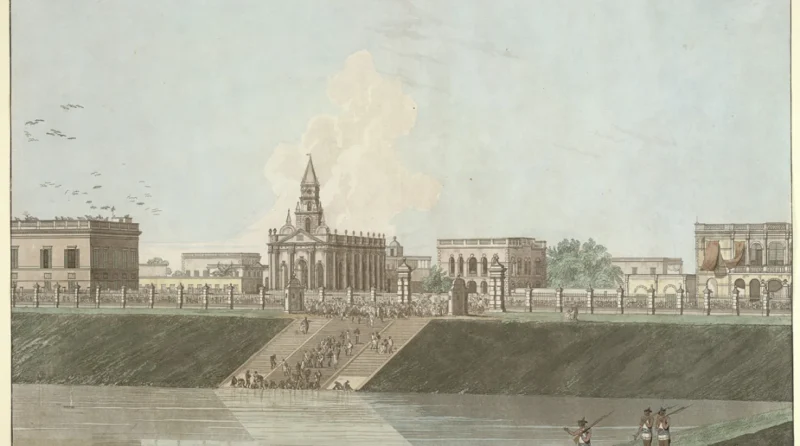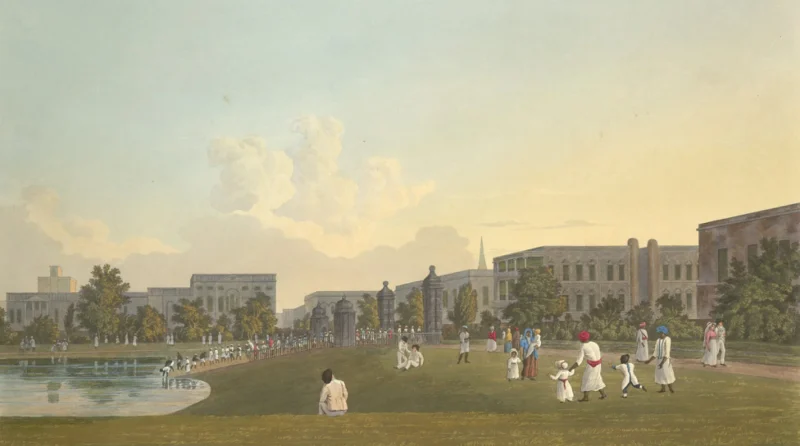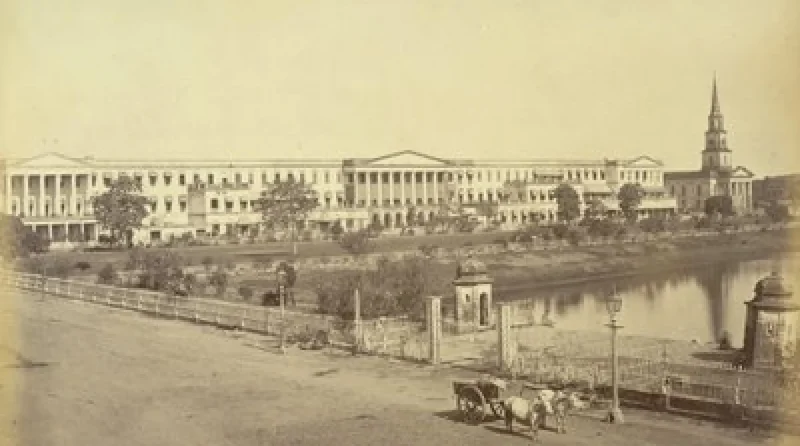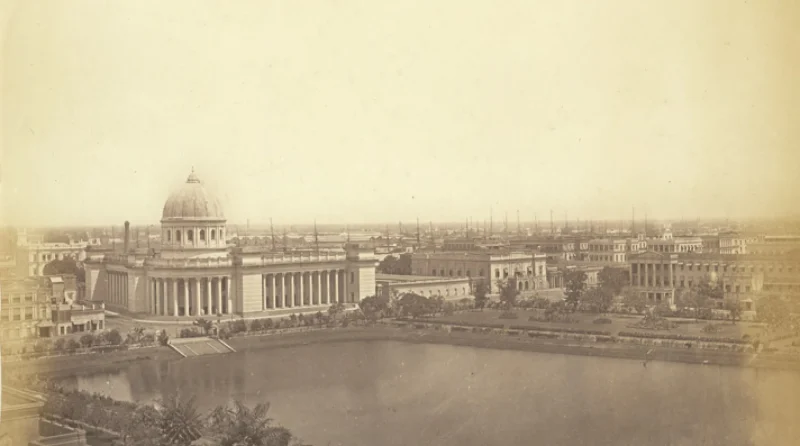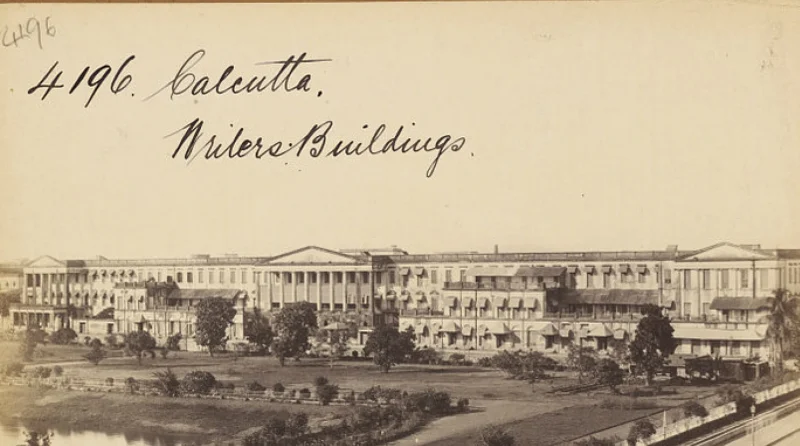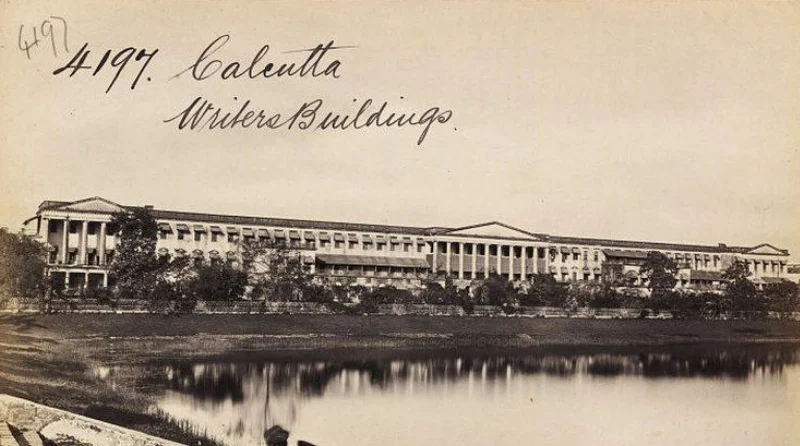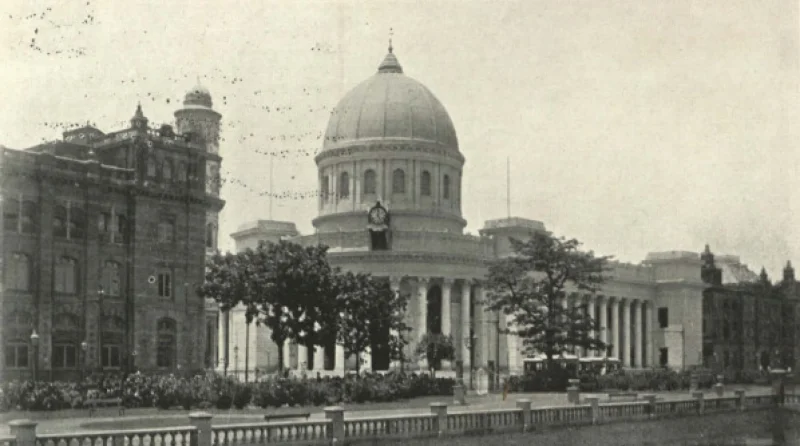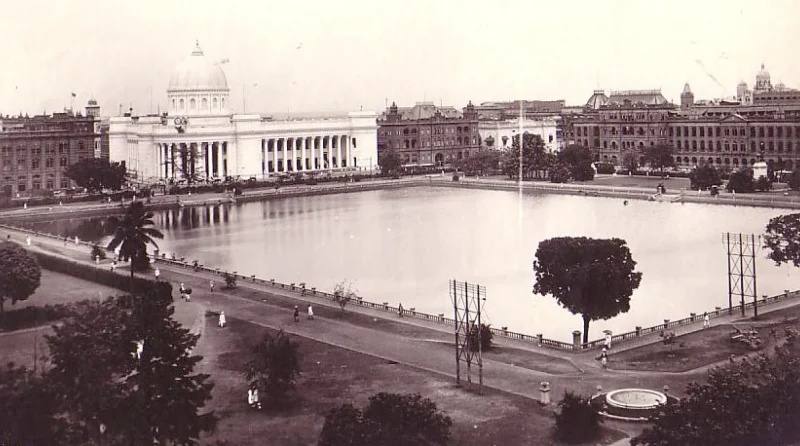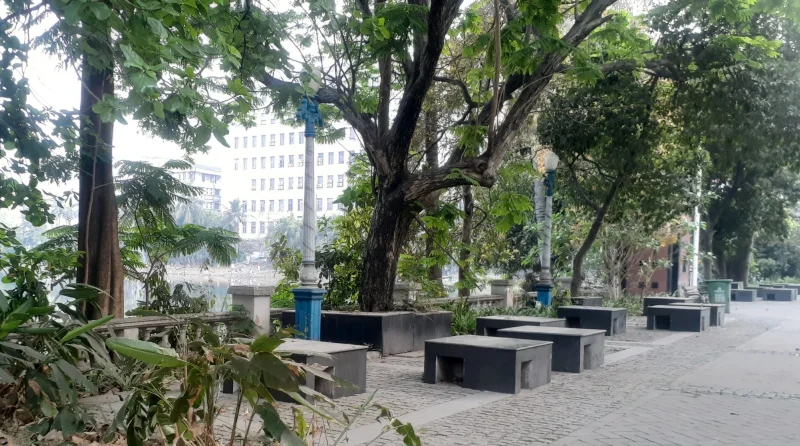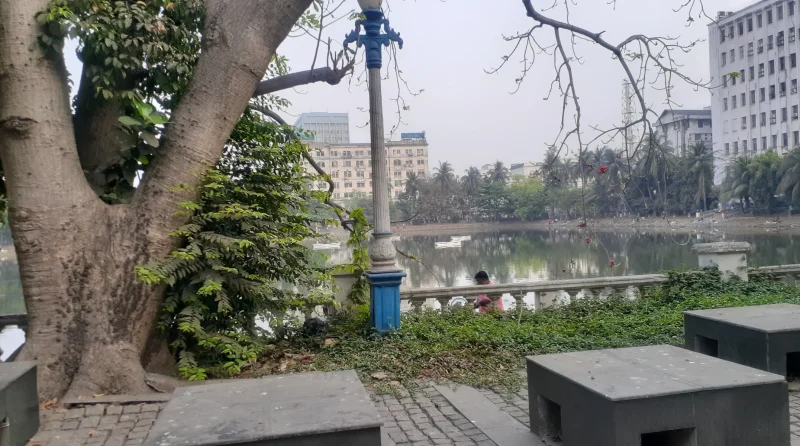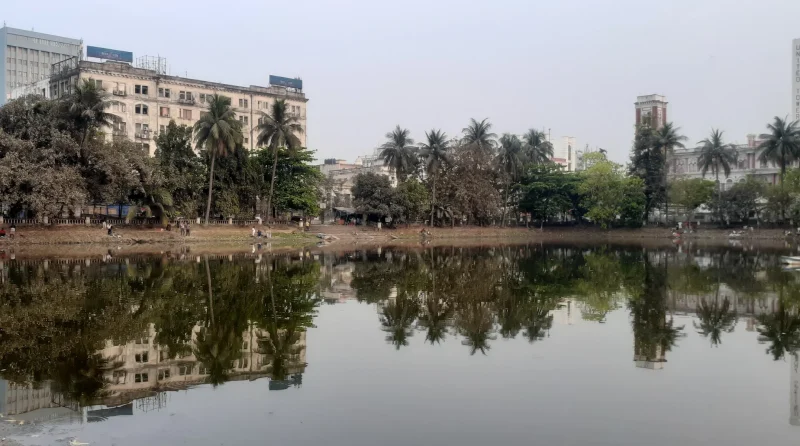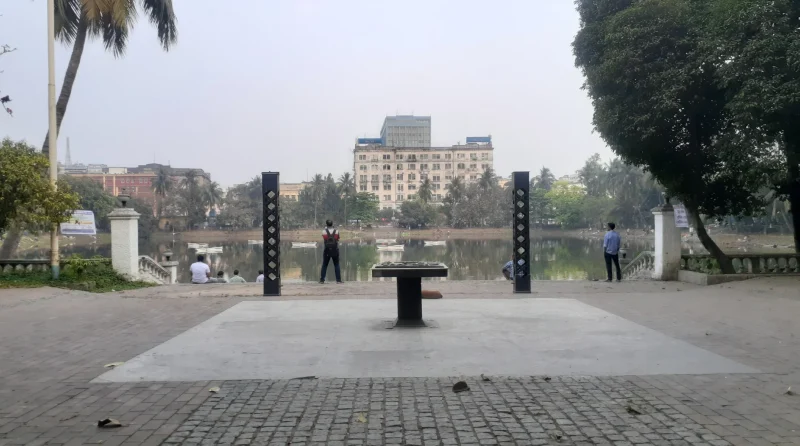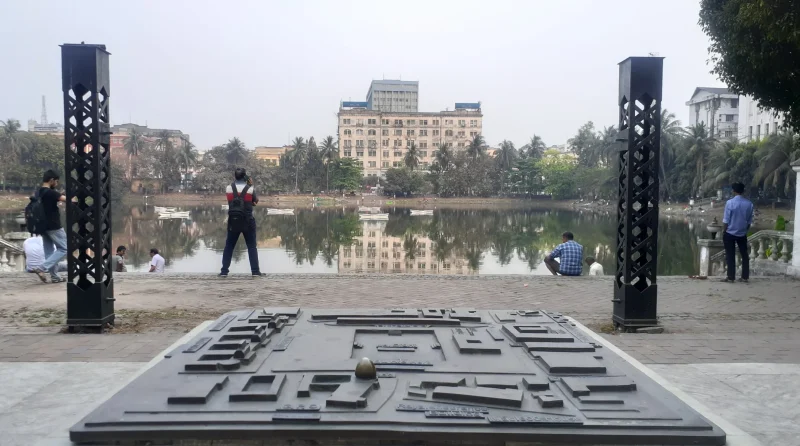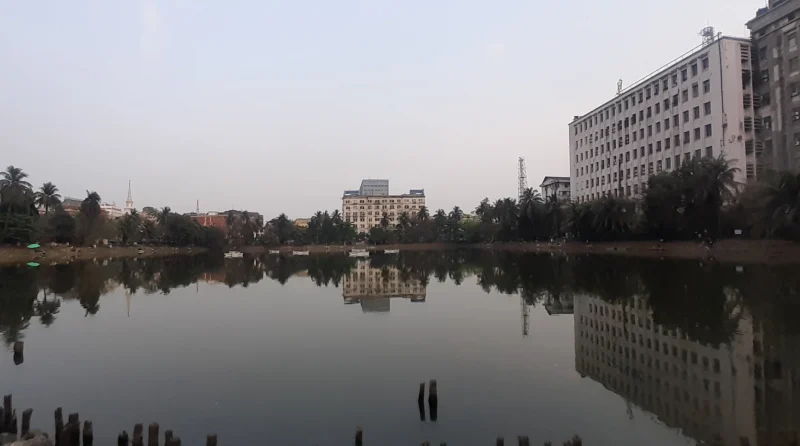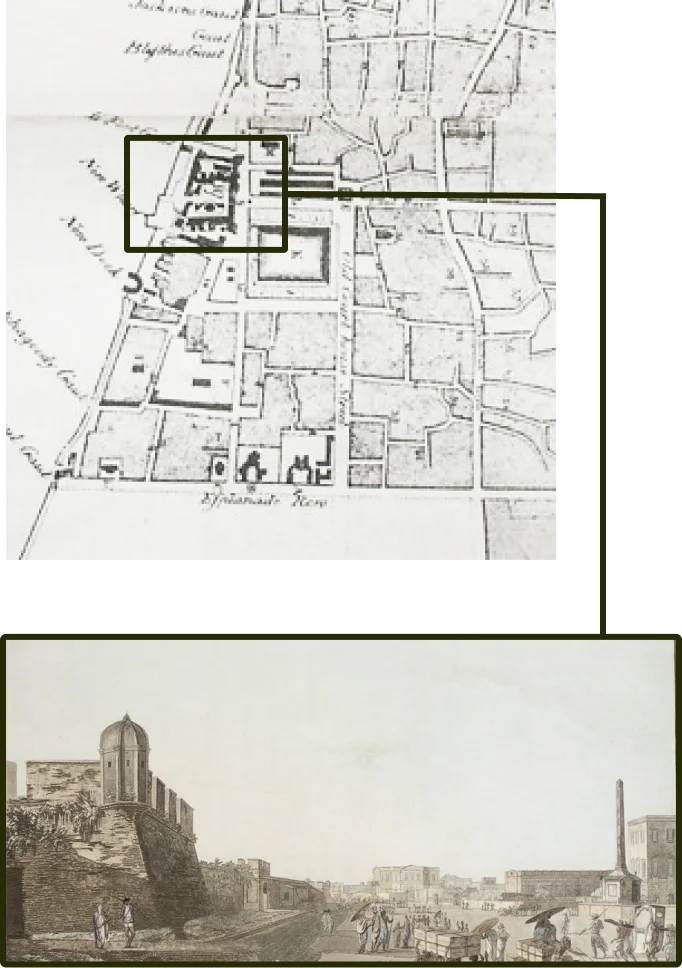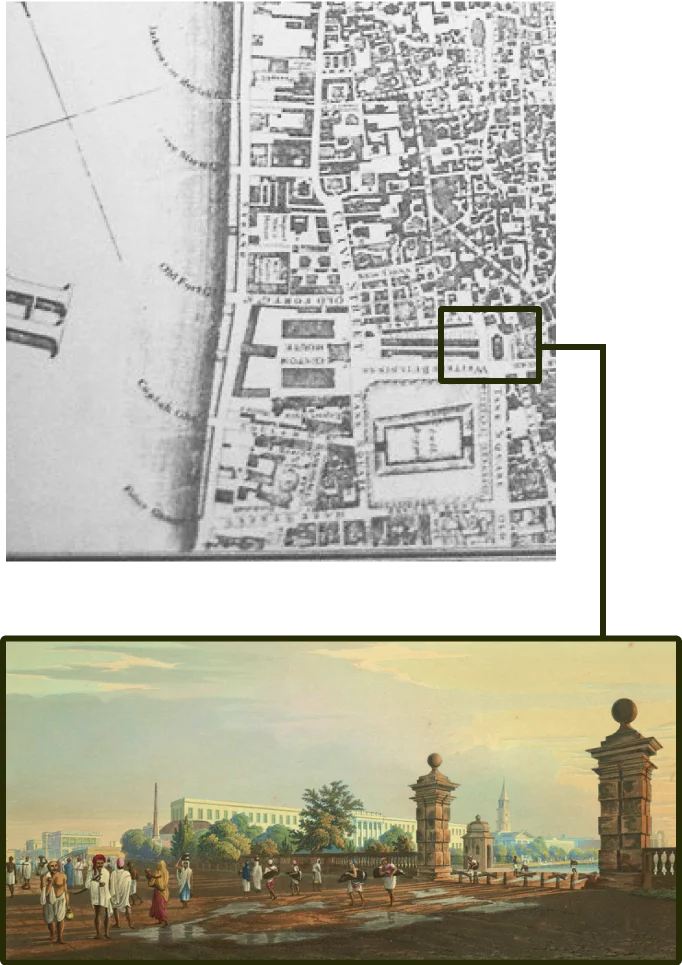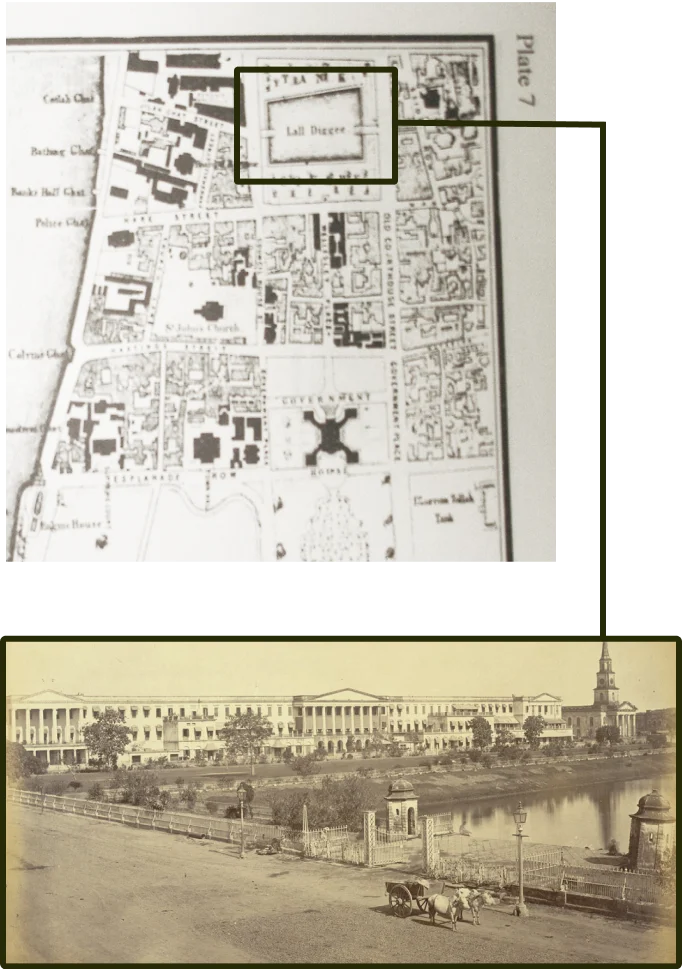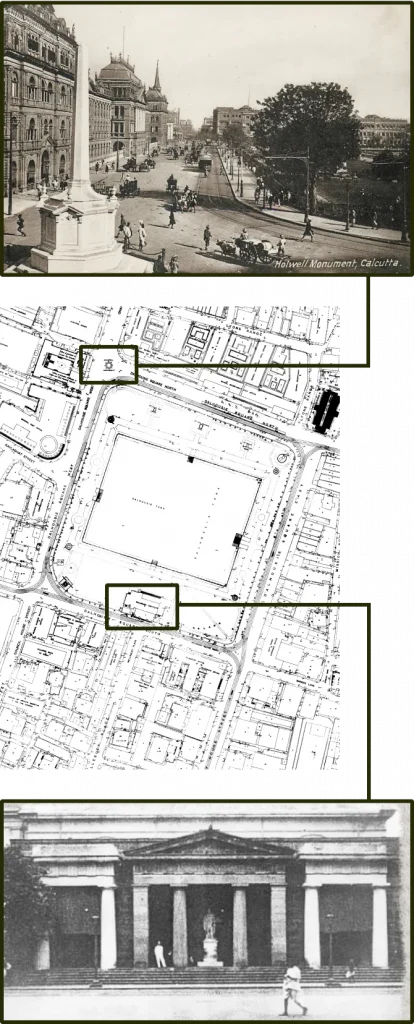Laldighi is a 5.7-acre, man-made rectangular water tank in Kolkata’s B.B.D. (Benoy Badal Dinesh) Bagh was part of the historic blue center of erstwhile Calcutta. For over three centuries, it has functioned as the nucleus of the city’s administrative district. Today it is surrounded by several listed heritage buildings—The Writers’ Building (secretariat of the state government) to the north, the General Post Office (currently standing on the foundation of the Old Fort) to the west, the Standard Life Assurance building and the Dead Letter Office to the south, and the Currency building to the east. The Royal Exchange (former residence of Robert Clive, now housing the Bengal Chamber of Commerce), Town Hall, High Court, Governor’s House, and St John’s Church are also within close vicinity.
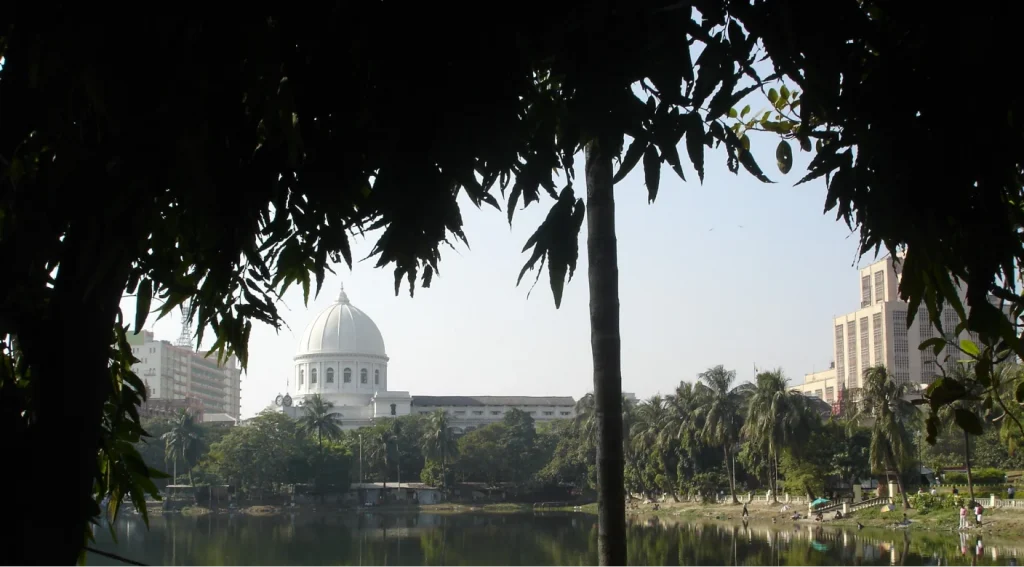
“Laldighi was not only the historic blue centre of the erstwhile Calcutta, but it also continues to be the nucleus of the city’s administrative district for more than three centuries now.”
Consequent to the initiatives by two heritage conservation organisations, Action Research in Conservation of Heritage (ARCH) and the Indian National Trust for Arts and Cultural Heritage (INTACH), this square was declared one of the 100 most endangered sites of the world by the World Monuments Fund on 24th September 2003.
Once luxurious in greenery on all sides, Laldighi has, slowly but steadily, lost its foliage to rapid urbanization which has continued to solidify its concrete presence on almost all sides of the tank. The western flank towards the General Post Office is the only remaining sizable open space.
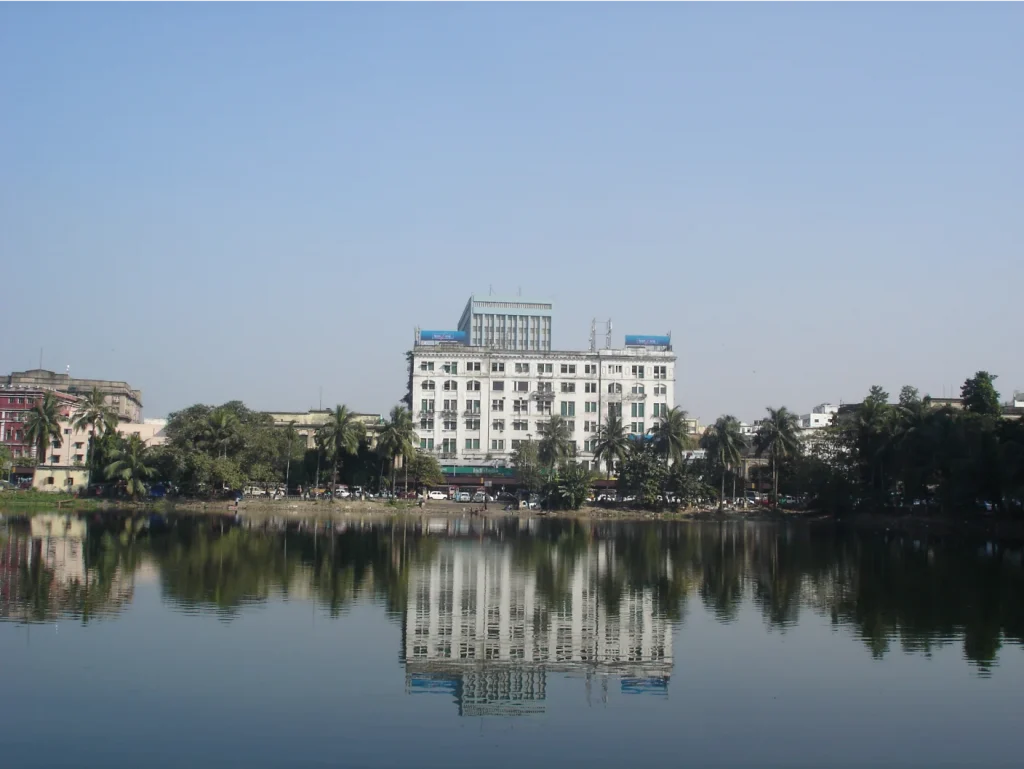
The Beginning
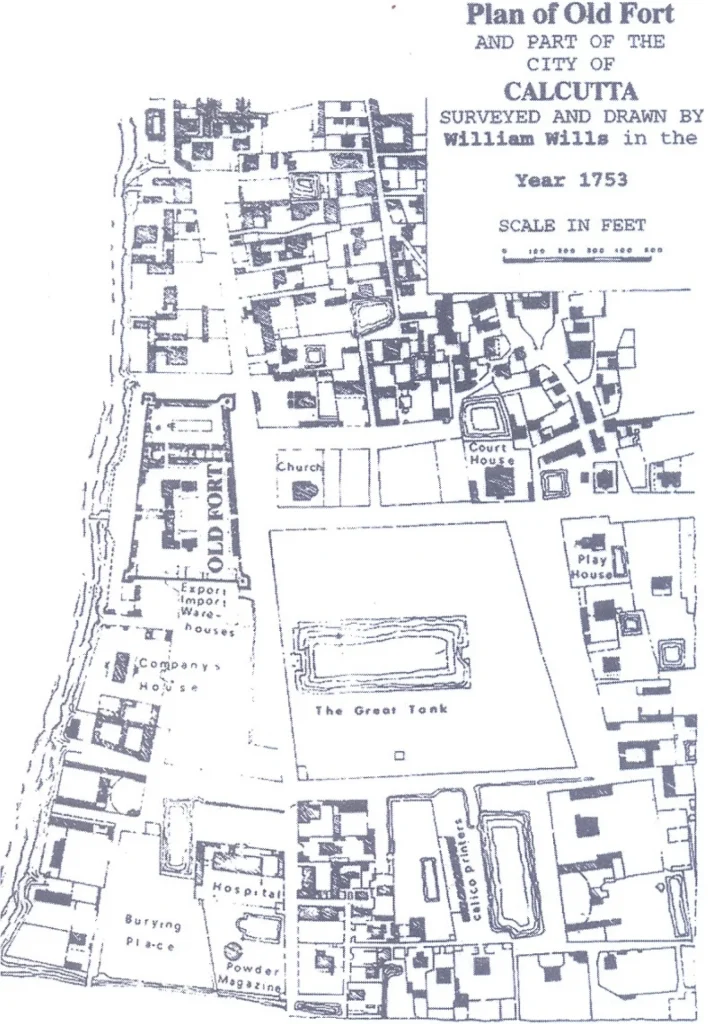
Adjacent to where Job Charnock (considered the founder of Calcutta) established his trading post in 1690 and where the old Fort William was later built (begun in 1698 and completed in 1706), Laldighi served as the blue centre of the British business settlement, then known as White Town. It was popularly stated to be ‘in the middle of the city’ during the 18th century.
“Plan of Old Fort (1753): Map drawn by William Wills where Laldighi is referred to as The Great Tank.”
Origin of the Name Laldighi
In Bengali, Laldighi means Red Tank. There are three schools of thought regarding the origin of its name. The water was dyed red during Holi or the Dol festival (of spring?) which used to take place at the Shyam Rai temple (belonging to the local zamindar or landlord, Sabarna Roy Choudhury’s family). He also owned a kutchery (courthouse) nearby that was first rented to and later purchased by the British East India Company. The old Fort William, which was a brilliant red hue, reflected in the water and gave it the name.A businessman named Lalchand Basak of Dihi Kalikata excavated the pond and had the tank named after him (lal meaning red).
Many a Name; Many a Purpose
From its inauguration to the height of its popularity, Laldighi came to be known by many names. From “The Green before the Fort”, to The Park, the Great Tank, to Tank Square, and Dalhousie Square (in memory of Lord Dalhousie, Governor General of India). Finally, in the 1960s, the square was officially renamed Benoy-Badal-Dinesh Bagh or B.B.D Bagh for short. The park and the tank supplied plant and fish to the Company and was the main source of drinking water until the introduction of a municipal water supply line. The grounds around Laldighi were used for recreational purposes by the British, whether it was for a casual stroll or for hunting wildfowl on occasion.
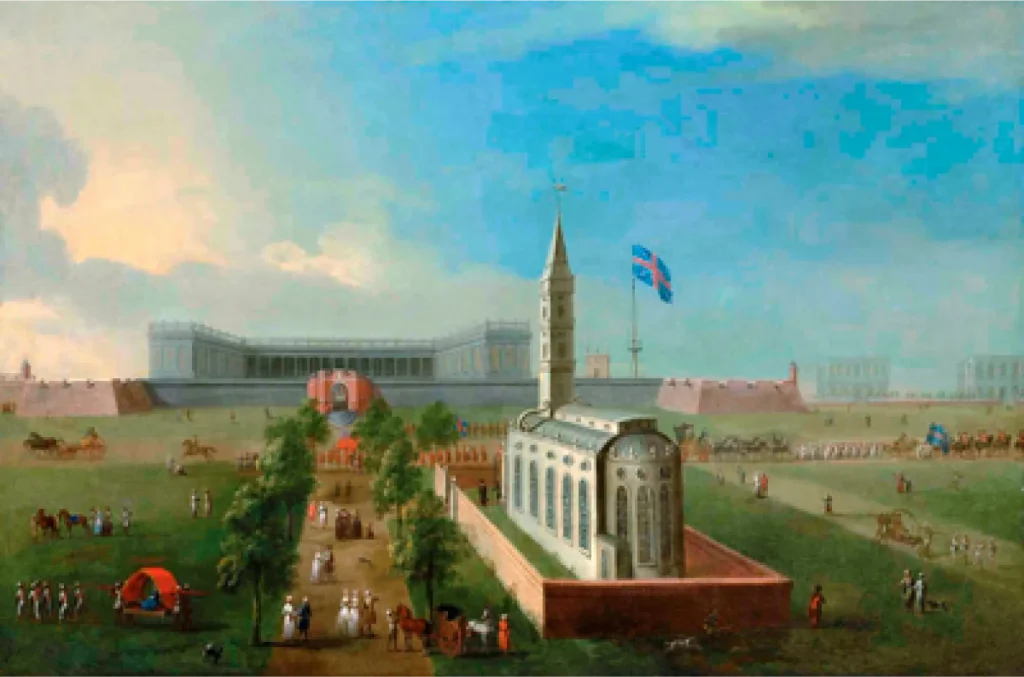
Laldighi in 18th – Early 20th Century
Laldighi in Recent Times
A Black Hole in History: The Battle of Laldighi
The peaceful ambience of the park transformed into a scene of violence when, on June 20, 1756 the forces of the Nawab of Murshidabad marched into the city on a rampage. Some of the buildings around the park suffered a great deal of damage such as St. Anne’s Church (where the Rotunda of the Writers’ Building now stands) and the old Fort William.
This battle is associated with the much-contested Black Hole tragedy. Fortune turned in favor of the British in 1757 when Calcutta was recaptured by Lord Clive in the Battle of Plassey by defeating Siraj-ud-daulah, the last Nawab of Bengal. The old fort was then reestablished in 1758.
Over the next two centuries Calcutta emerged as the City of Palaces, marked by the commissioning of several landmark institutions such as the Asiatic Society of Bengal (1784), the Governor’s House (1803), the Imperial Museum renamed Indian Museum (1814), Agri-horticultural Society of India (1820), the General Post Office (1868), the Central Telegraph Office (1876), and Victoria Memorial (1921) to name a few. While the boundaries of the city expanded manifold, Laldighi and the Square remained mostly unchanged in their physical fabric.
A comparison of the three maps of the years 1784-85, 1825-32 and 1855 reflect an evolution of the northeast corner of the Tank Square. The Old Court House (or Kutchery) is seen in the first, it is then replaced by St. Andrew’s Church (1818) in the second, and the last photograph shows the church spire dominating the northern skyline of Laldighi.
The Battle of Laldighi
Survey Maps Showing Evolution of the Laldighi Environs



Interactive Map of Calcutta
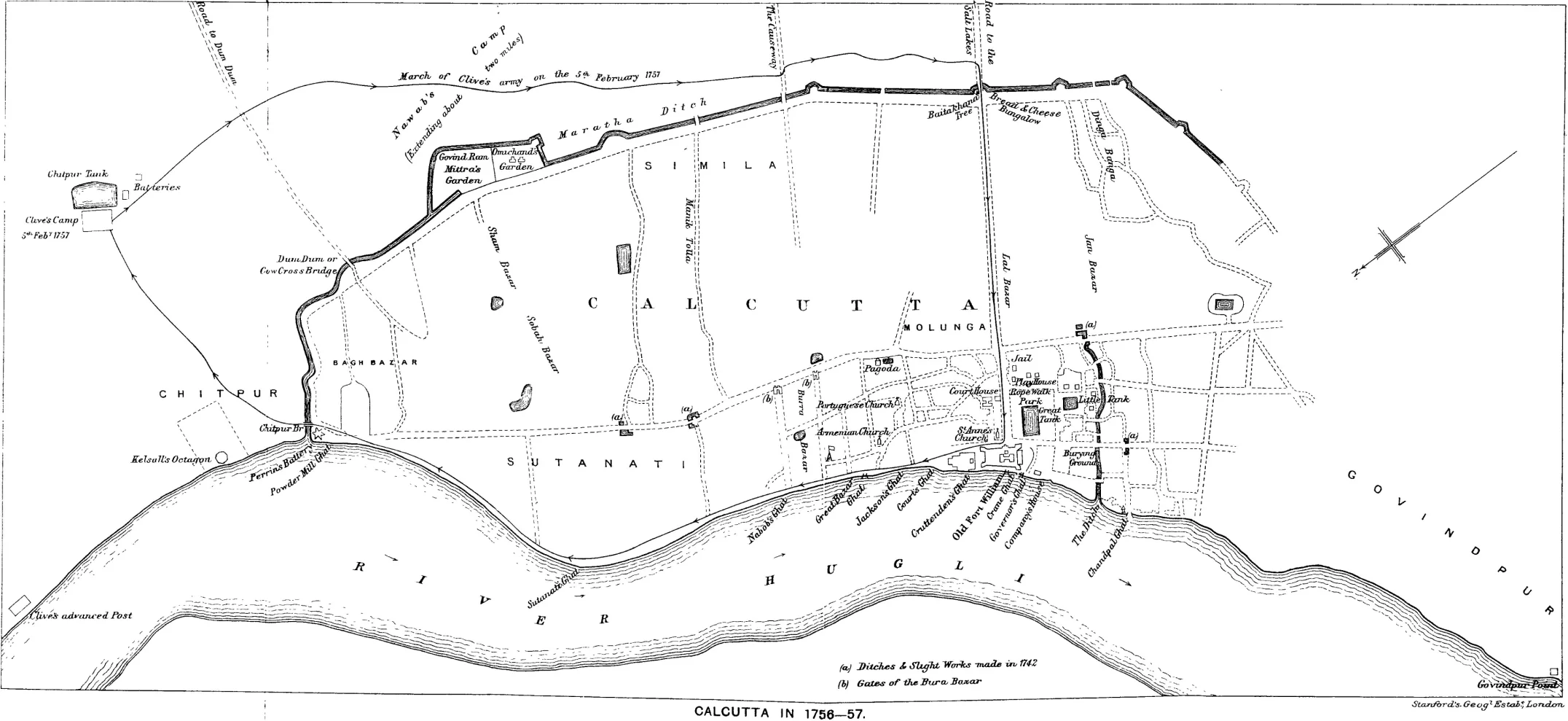
Jaun Bazar
The landed estate of Rani Rasmoni (1793-1861), an able administrator, and founder of Dakshineshwar temple.
Lal Bazar
Laldighi
Named the Park and the Great Tank (there was a little tank close-by).
St. Anne’s Church
The first English Church, east of the old Fort Williams, where the Writers’ Building now stands
Old Fort Williams
The first foothold of the British East India Company on the eastern bank of River Bhagirathi-Hooghly.
Portuguese Church
Armenian Church
Burra Bazar
The great market place and traders’ hub
Sutanuti
Mission: (Un)impossible, 1930
175 years after the battle of Laldighi saw its grounds become the backdrop for yet another historic event, this time a revolutionary act that was part of the Indian freedom movement. Inspired by Netaji Subhas Chandra Bose and a desire to free their country, three young Bengali men resolved to avenge the inhuman torture meted out by the British against their fellow freedom fighters in the prisons.
Benoy Basu (22), Badal Gupta (18), and Dinesh Gupta (19), members of the Bengal Volunteers, marched into the Secretariat on 8th December 1930. They were dressed in impeccable western garb to gain access into the building and once inside, completed their mission by fatally shooting Col. N. S. Simpson, the notorious Inspector General of Prisons, in his office. The valorous trio were martyred in the aftermath of this mission and Laldighi was named Benoy-Badal-Dinesh Bagh (bagh meaning garden/park) after Independence, to honour their sacrifice and contributions to the freedom movement.
The valorous Trio
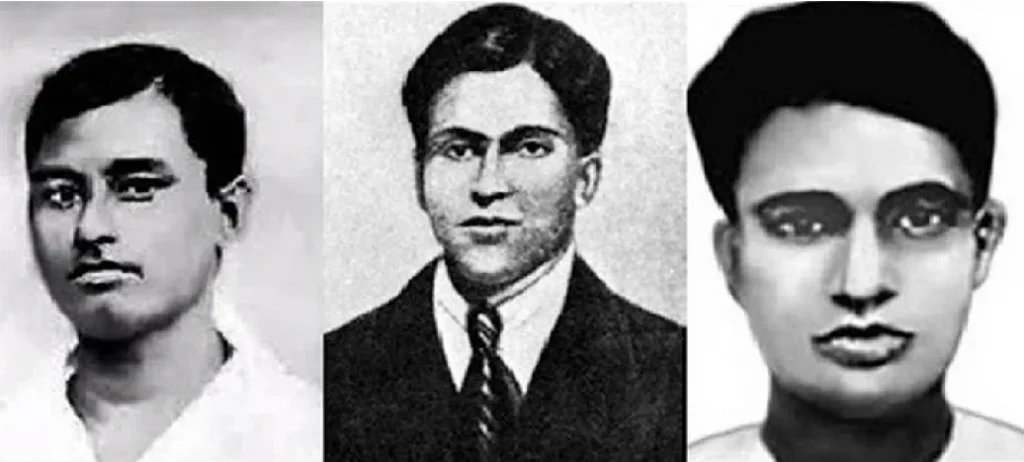
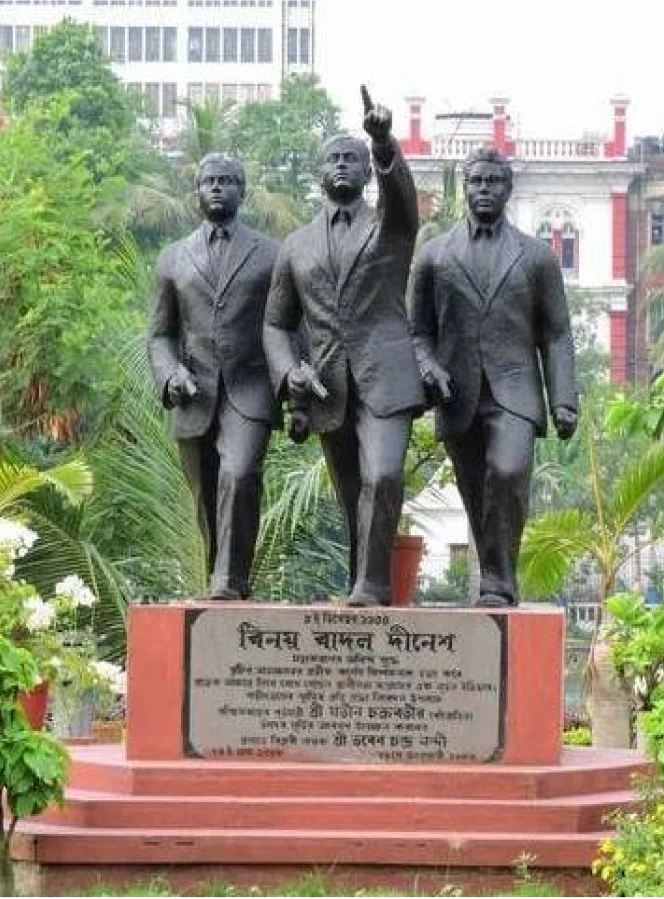
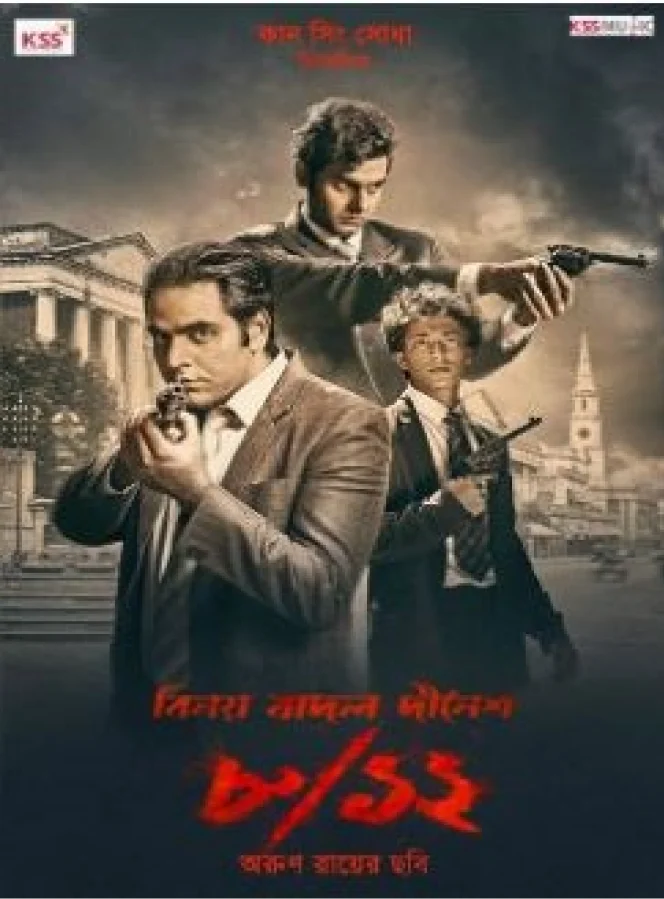

Changing Skylines
The 1910 Smarts survey map of Kolkata Municipal Corporation shows two structures near Laldighi that no longer exist: Holwell monument (encircled in the map by black dots) built in 1760 by G. Holwell and removed in 1940 to St. John’s church grounds, mainly through Netaji Subhas Chandra Bose’s efforts.Dalhousie Institute (encircled in the map by red dots), built in 1865 and replaced by the Telephone Bhavan building in 1950.

Right Top)Holwell monument in the N-W corner of Laldighi, removed in 1940.
Right Bottom)Front elevation of Dalhousie Institute, demolished in 1950.
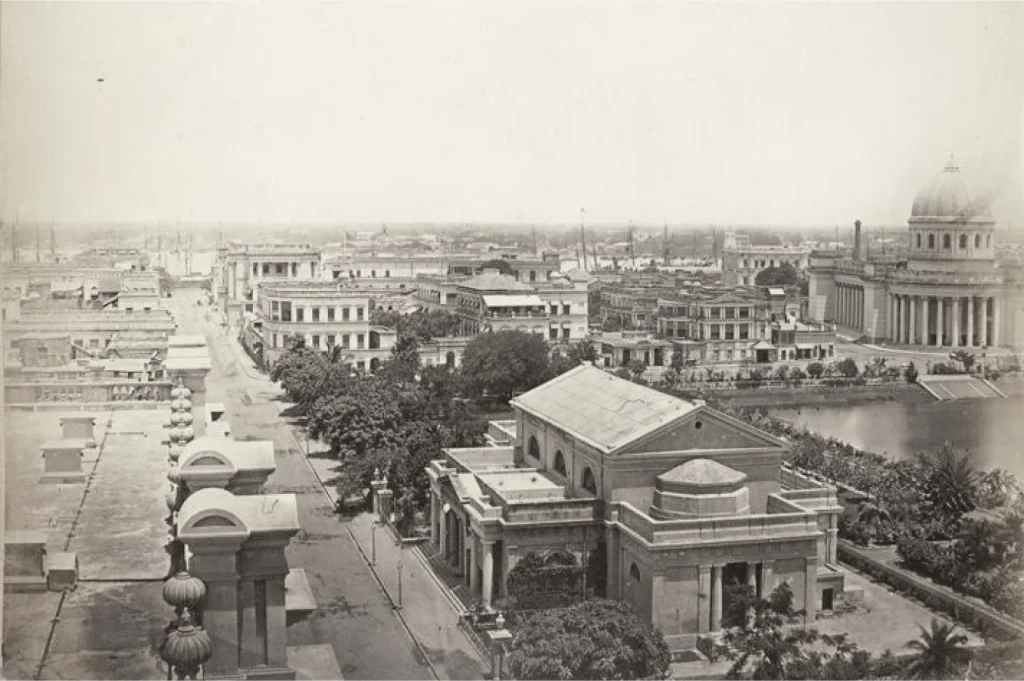
“Looking west: Dalhousie Institute to the right of the roadway. A glimpse of Laldighi is also seen in the far right.”
“With the demolition of the Dalhousie Institute in 1950 in favour of the ‘modern’ Telephone Exchange, the north-south vista connecting the two iconic seats of governance – Writers’ building in the north and the Governor’s House in the south- was permanently lost. ”
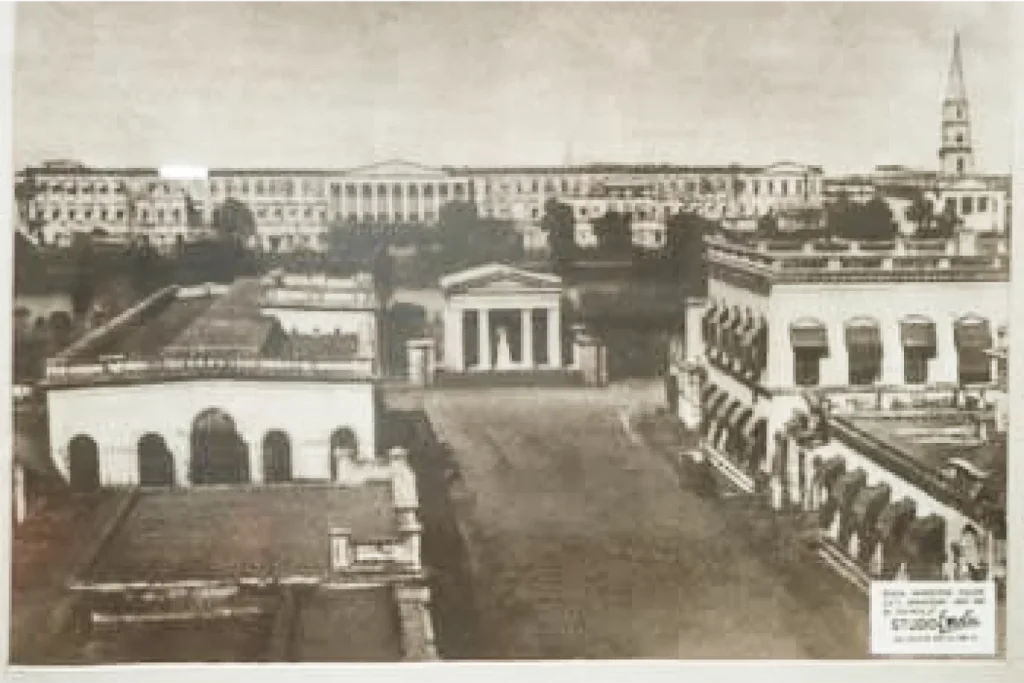
A Blue-Green Space, a Public Place – Laldighi Rejuvenation (2012-13)
In 2011, the newly elected State Government decided to restore the Writers’ Building and rejuvenate the western flank of Laldighi’s grounds (then used for surface car parking). With due consideration of the historicity of the site and its environmental impact, the landscape intervention emphasized plantations along with spaces for passive recreation, keeping public safety and security in mind. A tactile site map signage of the area was added for information and appreciation of this historic urban center. With an abundance of government and institutional activity in the neighborhood, Laldighi is exceptionally vibrant throughout the day but unfortunately quiet and even desolate during the nighttime.
The W.B. Public Works Department, Kolkata Municipal Corporation, W.B. Fisheries Department, Calcutta Tram Company etc. extend urban services in and around the park. Office goers and citizens are often seen taking a break from their work amidst this oasis, occasionally watching the jet fountain installed in the dighi. The tree canopies, fragrant flowers, cool breeze, silvery waters mirroring the sky, and the sheer wide openness induce a peaceful contemplative atmosphere. Three centuries of urban history hiding under the cover of this tranquility reveals itself to the discerning mind who listens to Laldighi’s soft murmurs.
Before and After Images of Laldighi Environs in 2012-13
Before
After
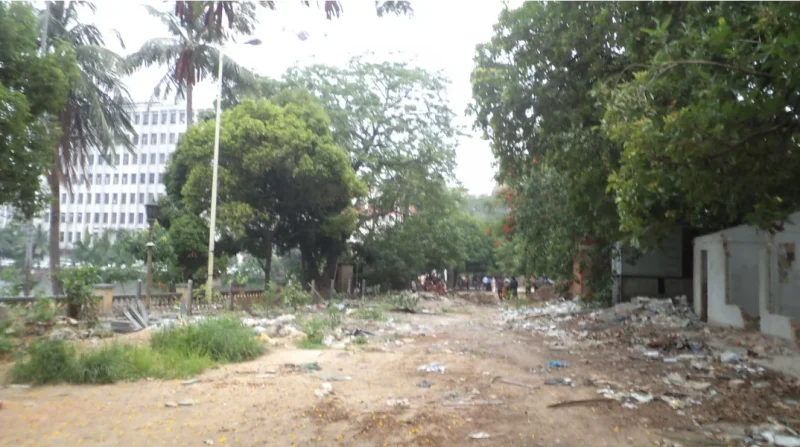
Before
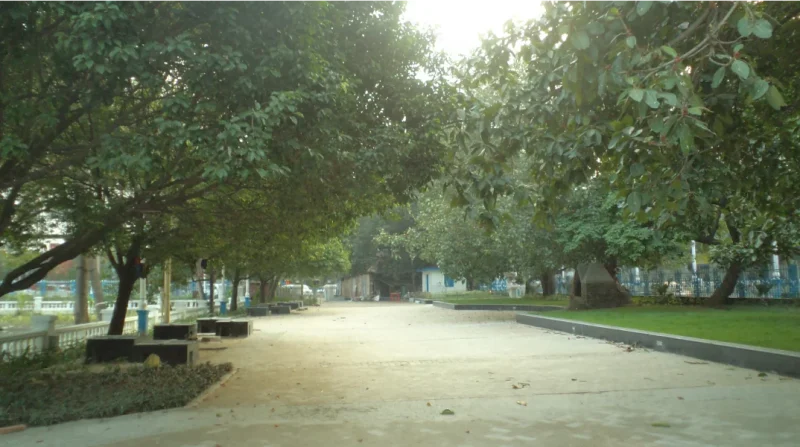
After
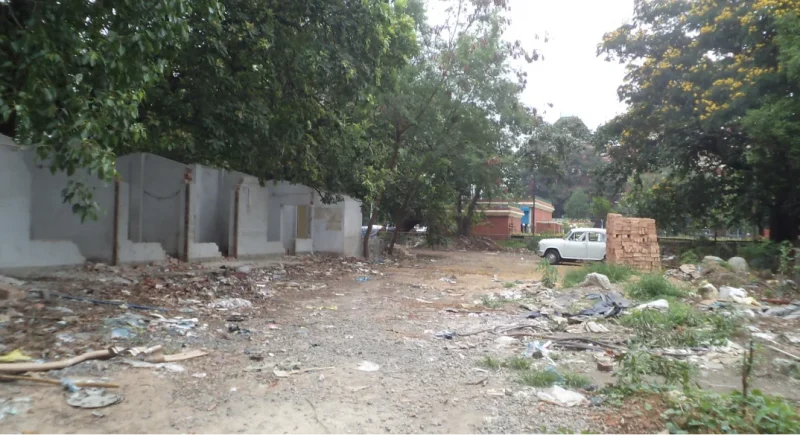
Before
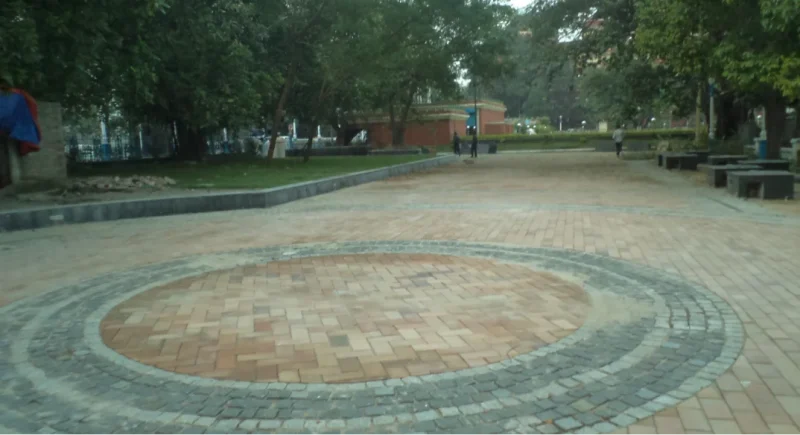
After
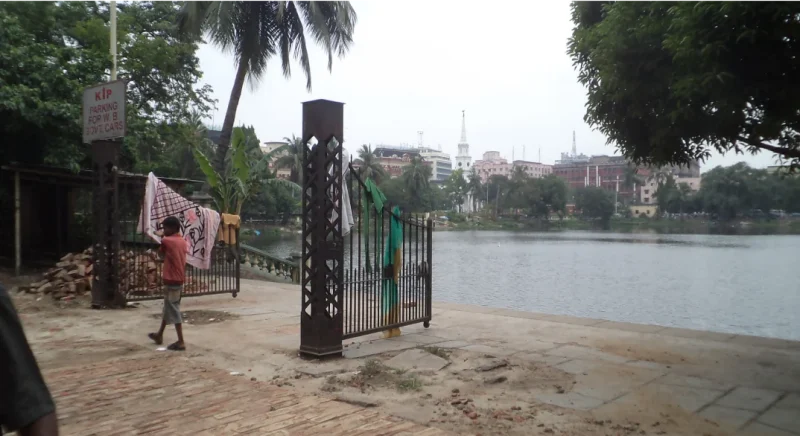
Before
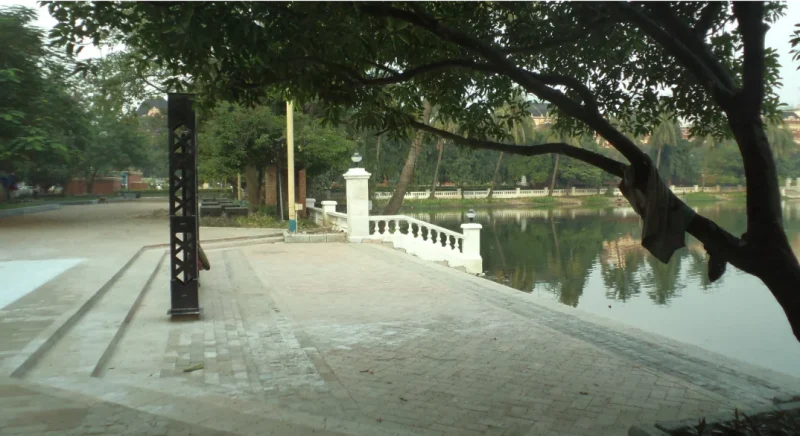
After
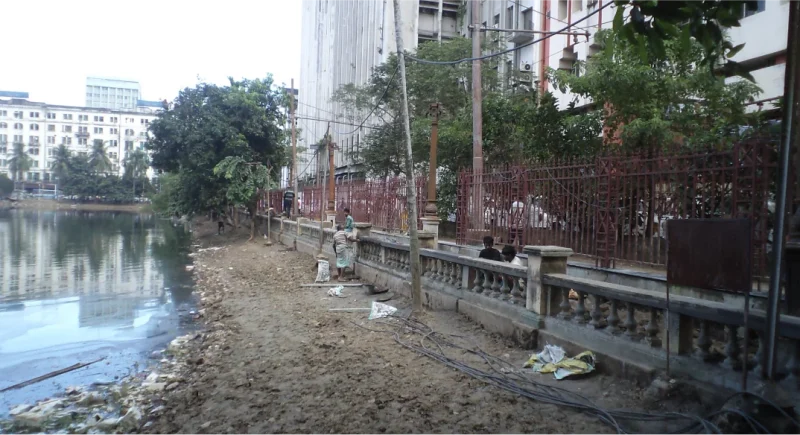
Before
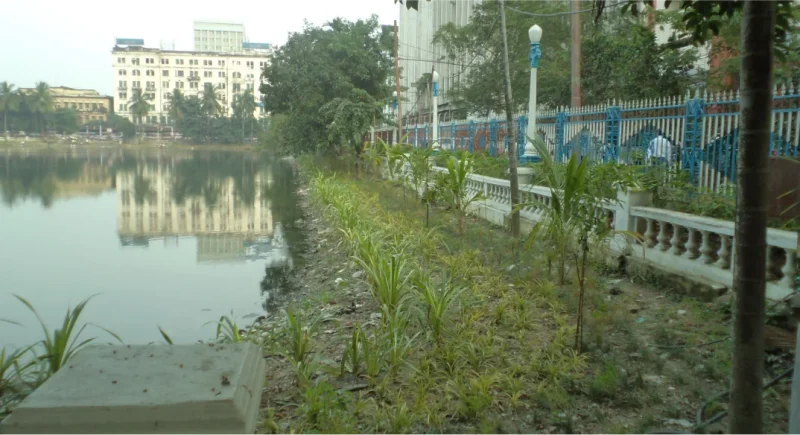
After
(source: Author)
Laldighi: Seeking Attention
Laldighi used to be a convivial setting full of life and verdancy before the COVID 19 pandemic. Three years on and about a decade after its restoration, Laldighi is yet to recover from the consequences of changed priorities in both public life as well as municipal governance. With the East-West metro passing by this ‘blue centre’ of Kolkata, one can only hope that it will regain its past glory once the metro rail becomes operational through its Laldighi stop.
References
- Amrit Mahotsav, Govt. of India, freedom-movement-detail. (accessed on 10.04.2023)
- Amrit Mahotsav, Govt. of India, unsung-heroes-detail.htm (accessed on 10.04.2023)
- ARCH & INTACH, (2005), Proceedings of the Workshop on ‘Conserving, improving and managing the historic city centre of Dalhousie Square, Kolkata’.
- Bardhan, S., (2011), Detailed Project Report on Laldighi for Kolkata Municipal Corporation.
- Busteed, H.E., (1908), Echoes front Old Calcutta: 1908 (4th edition).
- Chattopadhyay, M., (2013), Paschim Banger Porikalpita Nagarayan.
- Kundu Anil Kumar & Nag Prithvish, (1996), Atlas of the City of Calcutta and its environs, National Atlas & Thematic Mapping Organisation (NATMO).
- Netaji Research Bureau (accessed on 06.04.2023) Netaji Research Bureau
- Mukhopadhyay A., https://puronokolkata.com/2016/02/15/lal-dighi-lal-bagh-calcutta-1690/ (accessed on 10.04.2023)
- Ray M., Old Mirrors: Traditional Ponds of Kolkata, KMC, 2010.
- tuckdbpostcards (accessed on 06.04.2023)

